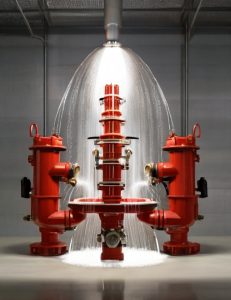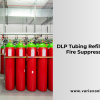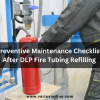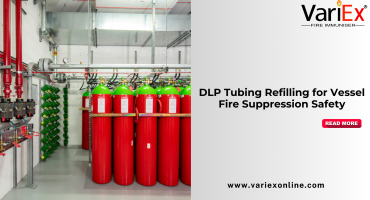![]()
Fire Immuniser
+91-7829629111
Email: info@variex.in
Varistor Technologies Pvt. Ltd.
Block-1, First Floor, Ardente Office One, Hoodi Circle, ITPL Main Road, Bengaluru, Karnataka 560048, IN
Types Of Fire Suppression Systems
Fire suppression systems are essential tools in protecting lives and property from the devastating effects of fires. They come in various types, each designed to address different fire hazards and environments. In this guide, we'll explore the different types of fire suppression systems, their components, and their applications.
1. Water-Based Fire Suppression Systems:
- Sprinkler Systems: Sprinkler systems are widely used and consist of a network of pipes with sprinkler heads. When heat activates a sprinkler head, water is released to extinguish or control the fire.
- Water Mist Systems: Water mist systems use fine water droplets to suppress fires. They are suitable for environments where water damage needs to be minimized, such as data centers and museums.
2. Gaseous Fire Suppression Systems:
- CO2 (Carbon Dioxide) Systems: CO2 systems release carbon dioxide gas to extinguish fires by displacing oxygen. They are commonly used in areas containing electrical equipment.
- Clean Agent Systems: Clean agent systems use non-toxic gases to suppress fires without leaving residue. They are ideal for protecting sensitive equipment and archives.
3. Foam-Based Fire Suppression Systems:
- Foam Systems: Foam systems use a mixture of water and foam concentrate to suppress fires. They are effective for flammable liquid fires and are commonly used in industrial settings.
4. Dry Chemical Fire Suppression Systems:
- Dry Chemical Systems: Dry chemical systems use dry chemical agents to extinguish fires by interrupting the chemical reaction. They are versatile and effective for various fire hazards.
5. Pre-Action Fire Suppression Systems:
- Pre-Action Systems: Pre-action systems are hybrid systems that combine features of dry pipe and wet pipe sprinkler systems. Water is held back until a fire is detected, providing an extra layer of protection against accidental discharges.
Conclusion
Each type of fire suppression system has its advantages and is suited for specific applications. By understanding the different types and their components, individuals and organizations can choose the most appropriate system to protect their property and ensure the safety of occupants in the event of a fire. Regular maintenance and testing of these systems are essential to ensure their effectiveness when needed most.
Frequently Asked Questions (FAQs)
What are fire suppression systems?
Fire suppression systems are specialized equipment designed to detect, control, and extinguish fires in various environments. They come in different types, each tailored to address specific fire hazards.
What are the main types of fire suppression systems?
The main types of fire suppression systems include water-based systems (such as sprinkler and water mist systems), gaseous systems (like CO2 and clean agent systems), foam-based systems, dry chemical systems, and pre-action systems.
How do fire suppression systems work?
Fire suppression systems work by detecting fires through heat, smoke, or flame detection devices. Once a fire is detected, the system activates and delivers the extinguishing agent to the fire area, suppressing or extinguishing the flames.
Where are fire suppression systems commonly used?
Fire suppression systems are commonly used in commercial buildings, industrial facilities, warehouses, data centers, museums, server rooms, and other environments where fire hazards exist. They are also installed in vehicles, aircraft, and marine vessels.
Are fire suppression systems required by law?
In many jurisdictions, fire suppression systems are required by building codes, regulations, and insurance standards, especially in commercial and industrial settings. Compliance with these requirements helps ensure the safety of occupants and protection of property.
How often should fire suppression systems be inspected and maintained?
Fire suppression systems should be inspected and maintained regularly according to manufacturer recommendations, industry standards, and regulatory requirements. Typically, inspections are conducted annually, with more frequent checks for certain components.
Can fire suppression systems be integrated with other fire safety measures?
Yes, fire suppression systems can be integrated with other fire safety measures such as fire alarms, smoke detectors, emergency lighting, and evacuation plans. This integrated approach enhances overall fire safety and emergency response capabilities.
Final Say
We at VariEx.in or Variexonline.com have mastered the art of designing, installing, inspecting, and fixing automatic sprinkler systems with the help of our in-house team, which is capable of delivering the fire sprinkler services you need, whether large or small and at affordable cost.
To schedule a fire sprinkler installation, or you think our services could benefit your commercial property, contact us online or give us a call at, 7829629111
"WHAT YOU CAN READ NEXT"
 Read more +24 November 2023 in Fire Extinguisher
Read more +24 November 2023 in Fire ExtinguisherWhat types of fire extinguishers are available for different fire classes?
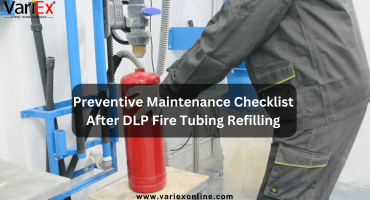 Read more +11 July 2025 in Fire Suppression
Read more +11 July 2025 in Fire Suppression

